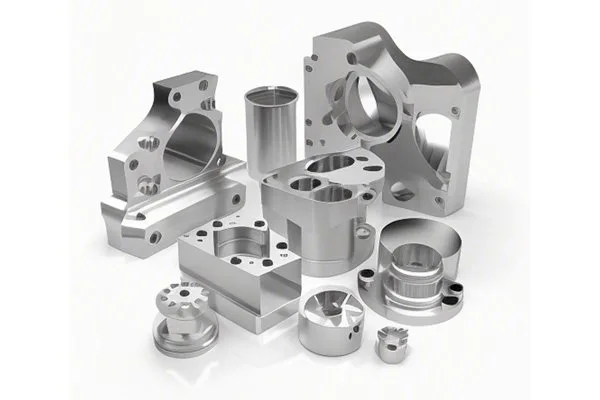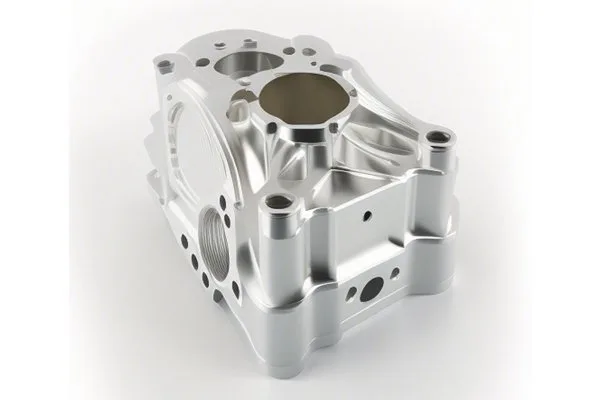In a rapidly evolving industrial landscape, where the demand for precision manufacturing continues to rise, CNC (Computer Numerical Control) machining has emerged as a cornerstone of modern production. At YL Machining, we’re not just keeping pace with these technological advancements—we are setting the standard. Our commitment to innovation, quality, and sustainability reflects our deep understanding of the intricate mechanisms that drive our industry.
In this comprehensive exploration, we will delve into the world of CNC machining, particularly focusing on the critical differences in efficiency and precision between two prominent stainless steel materials: 304 and
The Foundation of CNC Machining
CNC machining is a subtractive manufacturing method that utilizes pre-programmed computer software to control the movement of machinery and tools. Essential in crafting complex components, this technology is integral to diverse industries, including aerospace, automotive, medical devices, and electronics.
This section will examine the elements that position CNC machining as an essential manufacturing technique in today’s market.
1.1 Accuracy and Precision
CNC machines can execute tasks with an impressive degree of accuracy—often within 0.01 mm. This automated process reduces human error, making it an ideal choice for industries where precision is paramount.
1.2 Complexity Handling
Designs that were once thought to be impractical can be brought to life through CNC machining. This capability allows for the creation of intricate geometries that would be challenging to achieve through traditional methods.
1.3 Efficiency
With the ability to operate continuously, CNC machines drastically increase production efficiency. With optimized cycles and reduced downtime, manufacturers can meet growing demand without compromising quality.
1.4 Flexibility
CNC technology supports a wide array of materials, enabling the creation of components across various sectors. Additionally, program alterations are straightforward—machining can pivot between projects with minimal effort.
Before diving deeper, let us establish a foundation by understanding what makes 304 and 2205 distinct and optimal for CNC machining.
2.1 304 Stainless Steel
304 stainless steel, a member of the austenitic family, is notable for its balance of strength and corrosion resistance. With an excellent resistance to oxidation and atmospheric environments, it’s favored in various applications ranging from kitchen equipment to chemical containers.
Key Properties:
2.2 2205 Stainless Steel
Conversely, 2205 stainless steel is a duplex alloy that combines features of both austenitic and ferritic stainless steels. It offers enhanced strength and a better resistance to stress corrosion cracking, specifically in chloride environments, making it increasingly popular in the oil and gas sector.
Key Properties:
As we break down the differences in efficiency and precision when machining these materials, we also consider factors like tooling, cost-effectiveness, and application suitability.
3.1 Tooling Selection for CNC Machining
The choice of tools plays a significant role in the machining process. Generally, 304 is easier to machine due to its ductility, whereas 2205 may require specialized tooling due to its hardness.

3.2 Cutting Speed and Feed Rate
Optimal cutting speeds and feed rates are crucial to maximizing efficiency without sacrificing quality. For 304, these parameters can be higher owing to its softer nature. However, with 2205, speeds need to be reduced during machining to minimize tool wear and maintain precision.
3.3 Surface Finish and Tolerances
Achieving the desired surface finish is critical. 304 can typically attain better surface finishes easily, while 2205 may require precise post-machining treatments like grinding or polishing to meet stringent standards.
Understanding the cost implications of choosing one material over another is critical for manufacturing decision-making.
4.1 Material Costs
While 304 is generally less expensive, 2205 can be more economical over time due to its longevity and reduced maintenance requirement in harsh environments.
4.2 Processing Costs
The higher processing cost for 2205 due to specialized tooling and machining techniques must be contrasted with its performance benefits. At YL Machining, we prioritize value without compromising on quality, ensuring that clients feel confident in their material choices.
Drawing important distinctions between these materials through relevant applications can exemplify their strengths.
5.1 Applications for 304 Stainless Steel
5.2 Applications for 2205 Stainless Steel
The drive toward automation and intelligent manufacturing is reshaping the CNC landscape. At YL Machining, we are committed to sustainable practices and continual innovation.
6.1 Investing in Technology
We believe in the power of technology in enhancing productivity and quality. Our latest CNC machines integrate state-of-the-art sensors that monitor performance metrics, ensuring efficiency and optimizing processes in real-time.
6.2 Sustainability Initiatives**
YL Machining is continuously exploring methods to reduce our carbon footprint. From energy-efficient machines to sustainable material sourcing, we promote practices that harmonize production with environmental stewardship.
: Empowering Manufacturers Through Knowledge
By appreciating the intrinsic differences between 304 and 2205 stainless steel, manufacturers can make informed decisions that align with their operational goals. CNC machining is not just a method; it’s a catalyst for innovation, creativity, and functionality.
At YL Machining, we remain in a constant state of reflection, improvement, and mastery of our craft. Our passion for crafting precision-engineered components translates into successful partnerships and projects that further diversify the manufacturing landscape.
Through this exploration, we hope to empower industry professionals, inspire innovative solutions, and reaffirm our commitment to quality. Together, let us navigate the future of CNC machining with clarity and purpose.
—
Stay engaged with us as we navigate the fascinating world of CNC machining—where every cut tells a story.






